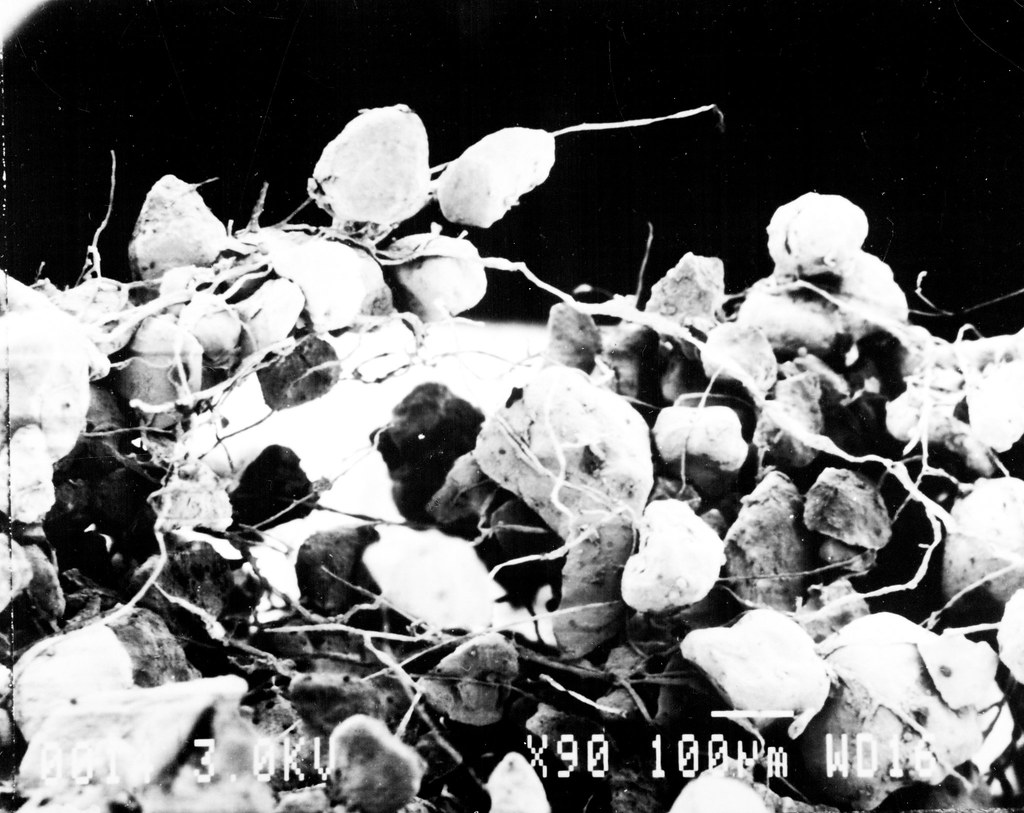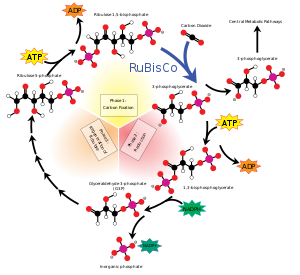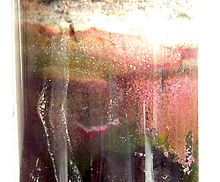Photosynthesis is the process by which light energy is converted to chemical via cellular respiration which can be used later as a fuel by organisms.
A few but not do all bacteria do photosynthesis. There are certain bacteria like the green sulphur or the purple and mainly the cyanobacteria that perform photosynthesis.
The reason for some bacteria performing photosynthesis is to let the bacteria that are photosynthetic in nature have energy maintained for metabolism and their growth from carbon monoxide and organic acids.
They show their growth mostly on the organic acids which are involved into the tricarboxylic acid cycle and then produce carbon dioxide and hydrogen. They are the prokaryotes that produce their own energy.
The reason for some of the bacteria not being able to perform photosynthesis is for the lack of chloroplast in them while there are still that perform photosynthesis with the help of tiny vesicles that are associated with the plasma membrane.
The type of bacteria that are referred to as cyanobacteria which are negative type in nature obtains energy through photosynthesis. Along with this the purple and green sulphur bacteria also show photosynthesis.
How do they photosynthesize?
Cyanobacteria make the use of many pigments which are in general referred to as photosynthetic pigments. These pigments include phycoblins, carotenoids and several other forms of chlorophyll.
This helps in absorbing the light and form chemical energy. These pigments are in the infolding’s of the bacteria with lacking chloroplast. They have chlorophyll that can carry oxygenic photosynthesis like the plants.
The rest bacteria perform anoxygenic photosynthesis and do not produce oxygen with using up hydrogen sulphide and else compounds.
Very unlike the prokaryotes that are heterotrophic, the cyanobacteria have internal membranes. These are the flat sacs called as thylakoids and are the site for photosynthesis.
All the eukaryotes like the green plants perform photosynthesis in the plastids which are expected to have their ancestors as the cyanobacteria that and their origin acquired long ago via a method called endosymbiosis.
Cyanobacteria are considered to be the first organisms to produce oxygen. With the production and releasing of oxygen as the byproduct of the process of photosynthesis, cyanobacteria are considered to get the early oxygen converted, reducing the atmosphere onto an oxidizing one.

Does photosynthesis always require chloroplasts?
Mostly in many contexts, there is a need for the plants to use their presence of chloroplasts to perform photosynthesis. But, bacteria unlike the rest have some to show photosynthesis.
It shows despite lacking of chloroplast. The photosynthetic bacteria include unstacked membranes that are photosynthetic in nature with the feature to have light harvested via the pigments and this works similarly to that of the thylakoids of the chloroplast.

Cyanobacteria being the biggest and the most diverse in terms of any photosynthetic groups are also called to be blue green algae. They are called to be a true prokaryote that has no chloroplasts yet still are able to perform photosynthesis.
The exact reason for this is they have the presence of chlorophylls that are distributed in the cytoplasm that is not packed in the chloroplast like the photosynthetic eukaryotes. They carry out oxygenic photosynthesis.
The system for their photosynthesis resemble close to that of the eukaryotes by-
- The use of Phycoblins by the bacteria for the purpose of photosynthesis as the needed pigment.
- A blue pigment phycocyanin in the predominant phycoblin
- The components of transparent chain and the photosynthetic pigments which are located in the thylakoids membranes and are linked with the particles known as Phycobilisomes.
- With the help of Calvin cycle the assimilation of carbon dioxide by the bacteria.
Does Photosynthesis only occur in Chloroplast?
The basic cell structures that ensure the method of photosynthesis take place in the chlorophyll, the thylakoids and the chloroplast.
In regards to bacteria, the blue green algae or the cyanobacteria do not have chloroplast yet perform photosynthesis. It can be concluded that bacteria need not have the presence of chloroplast to perform photosynthesis.
The cells for photosynthesis contain many special pigments that are used to absorb light. There are several pigments that react to different wavelength for the lights visible. Chlorophyll is the base pigment that reflects green light.
This process in general takes place in the chloroplasts that are sitting inside the mesophyll of all the leaves in plants. In the plants, the process of photosynthesis takes place in chloroplast having the chlorophyll embedded in it. The chloroplasts have double membrane surrounded it and has an inner third membrane. The green pigments are located inside the thylakoids connected like chambers.
It is altogether a both light dependent and independent method. The light dependent takes place when light is absorbed by thylakoids with absorption of carbon dioxide and is called Calvin cycle.

Can organisms without chloroplasts do photosynthesis?
Algae are the eukaryotic organism that contain both the character of animal and plant and also contain the photosynthetic organelles which are called das chloroplast.
On the other hand, there are some classes of bacteria which are able to photosynthesize like the purple sulphide or the blue green algae. Thus they are considered to be the true type of prokaryotes having no chloroplasts yet getting to perform photosynthesis.
Cyanobacteria thus performs oxygenic photosynthesis having to use water as the donor with releasing oxygen and where there is no need of chloroplast, instead the green pigment needed is stored inside the cytoplasm having the thylakoids.
Can photosynthesis occur without Chlorophyll?
If for the much known fact plants need the presence of chlorophyll, yet it is logical to have photosynthesis without chlorophyll. This happens for the presence of other photo pigments.
This make the use of photosynthesis to convert the energy of sun. There are plants that have purple red leaves which are used as the photo pigments that are available in the leaves. The plants having green leaves also have other pigments helping them in photosynthesis.
There is always a difference when the green plants and the rest capture the energy of the sun and the rest go under the process without chlorophyll. The green leaves absorb light from both the ends of the visible light. The pigments in the non-green leaf help absorbing of the light waves.
At, the same times the entire non-green are not so good and efficient in having to absorb the lights different light waves. But, they are quite active during the mid-day when the sun is at the brightest where there is no difference.
There are many plants that can photosynthesize without having leaves just like the cacti. They have spines that are used as modified version of leaves. The cells in the stem act as the leave shaving green pigments which helps them absorb and get the energy converted from sun via the method for photosynthesis.
Anoxygenic photosynthetic bacteria examples
The Anoxygenic photosynthetic of bacteria is different from the well called oxygenic photosynthesis in the plants by the use of reluctant like the hydrogen sulphide despite the use of water.
Several highlights for the example for different group of bacteria that perform an oxygenic photosynthesis are the green sulfur bacteria, the purple bacteria, the helipbacteria, acidobacteria and the red or green phototrophs that are filamentous.

The byproduct also differs with being elemental sulfur instead if the oxygen in molecules. The pigments use is kind of same as that of chlorophyll but are different in terms of the molecular details and the absorption of light peak. They capture sun energy for the metabolic resin and then are thus called phototrophic but are not yet called as photosynthetic carbon.
With not suing up the receptor type chlorophyll they use up the electron transport system and proteins like the halarhodopsin which helps in capturing the solar energy with the aid of the diterpenes that shall move the ions against the gradient and form ATP.
FAQs-
What is Oxygenic Photosynthesis?
The bacteria when uses up water in the form of electron donor and then generate oxygen while performing photosynthesis is referred to as oxygenic photosynthesis.
Which chlorophyll is needed for Photosynthesis?
Chlorophyll A is the very major pigments which are used for photosynthesis. There are yet many other types of it as well that also respond to light like blue, red and brown.
What is Calvin cycle?
The process in photosynthesis that deals with the light dependent process here light are absorbed by thylakoids and converting them into chemical form with absorption of carbon dioxide is called Calvin cycle.
Which pigments are used in Anoxygenic photosynthesis?
The pigments are bacteriochlorophylls A that absorb the electromagnetic radiation maximum in the close infrared inside the natural milieu membrane.
It is different from chlorophyll a and the cyanobacteria pigment having the capability for absorbing the peak wavelength.
Also Read:
- Hand anatomy
- Ectoplasm and endoplasm
- Dna supercoiling vital mechanism for dna packaging
- Epigynous flower example
- Do mitochondria have enzymes
- Types of flagella
- Cytoplasm and protoplasm
- Myriapoda examples
- Sequence of nitrogenous bases in dna
- Is diffusion directional
I am Ankita Chattopadhyay from Kharagpur. I have completed my B. Tech in Biotechnology from Amity University Kolkata. I am a Subject Matter Expert in Biotechnology. I have been keen in writing articles and also interested in Literature with having my writing published in a Biotech website and a book respectively. Along with these, I am also a Hodophile, a Cinephile and a foodie.